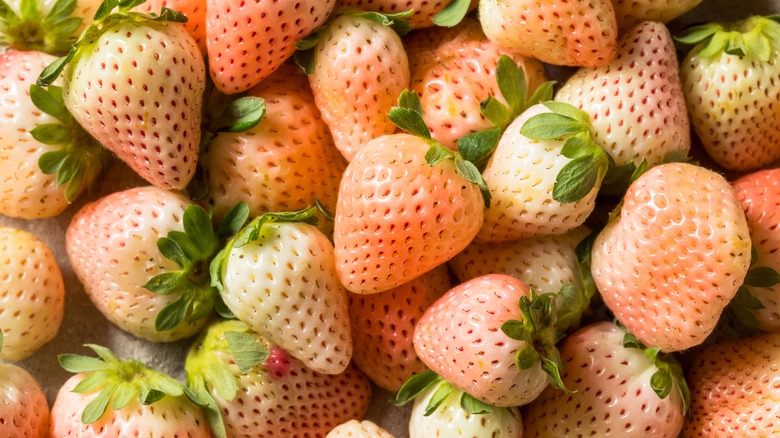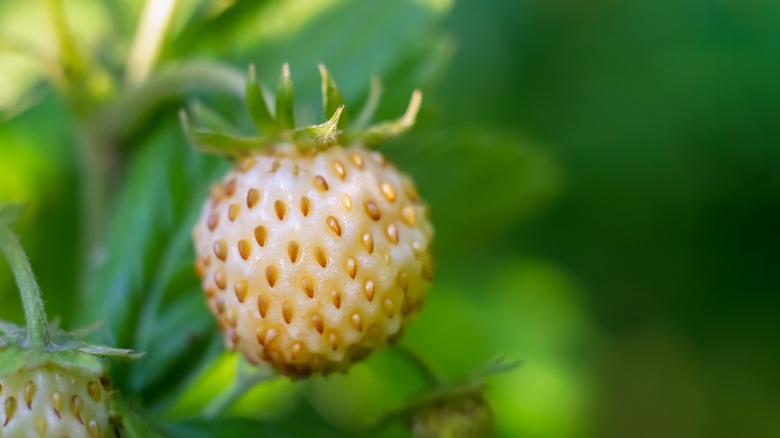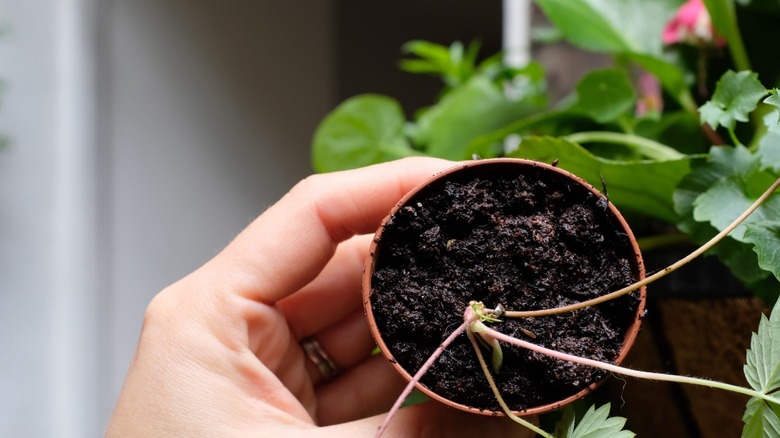We Know The Secret To Growing Those Delicious White Strawberries And It's A Must-Try
If you have been lucky enough to see those exotic-looking white strawberries with a hint of blush in your grocery store, they're every bit as delectable as one would hope. In fact, they're an exquisite flavor of strawberry pineapple and are known as pineberries. However, do not confuse them with alpine strawberries, which are pure white and not very good. Pineberries are actually a hybrid of the beach strawberry and the wild strawberry. But what does that mean in terms of propagation?
Luckily, we know the secret to growing pineberries. If you want to grow them, you must start them from the cuttings of other plants and not from seeds. Though seeds are indeed sold on Amazon and many other places, they are unlikely to produce fruit, just as any other hybrid. Typically this means you will need to special order them from a plant nursery. The good news is you only need a few plants, and you'll have a lifetime supply of runners for more new plants than you could possibly ever need. If you know someone who grows them, ask for a couple of cuttings, and you'll likely get a dozen.
Planting your strawberry cuttings
Start your cuttings indoors for best results, in pots. You can plant them in the ground in early spring after the last frost has passed, but keeping them indoors during the colder months will give them their best chances at producing fruit the first year. If left outdoors, when the temperature hits 20 degrees Fahrenheit, apply a thick layer of mulch just covering the tops of the plants. Keep a thin layer of mulch, such as straw, around the plants during the growing season. This will also deter slugs, which favor pineberries.
You should also feed the plants with a top dressing of composted manure in the fall to early spring. It's recommended that you plant a regular strawberry plant nearby in order to get the largest yield and for pollination purposes. One regular strawberry plant for every four pineberry plants should be a good ratio. Space cuttings with 18 to 24 inches between them. Make sure they don't get too much water but stay moist, and you should have a terrific white strawberry patch in no time! They are definitely worth a try.
How to propagate strawberries from runners
The really terrific thing about growing strawberries is you don't ever have to buy a lot of plants. You'll always have more than enough starter plants or runners for propagating them on your own, even if you start with just one or two plants. Once your plants are at least one year old and healthy, you can start taking runners at the rate of no more than five per plant. Before they're old enough, remove runners so the plants don't waste energy on them.
Runners are simple to root right in place with a bobby pin or a piece of wire. Just pin down the node where the new leaf grows out of into the dirt, gently but firmly, until it roots. If you want to transplant them into pots to move elsewhere, they need to stay connected with the mother plant until absolutely necessary. Use small cups and place them next to the mother plant. Make sure to water them once or even twice a day if they are very dry. After about four to six weeks, a new plant will grow new leaves and will have fully rooted into the soil, at which time you can cut it free. After about three to four years, you'll want to start new plants from runners again because they'll stop producing as much over time.


